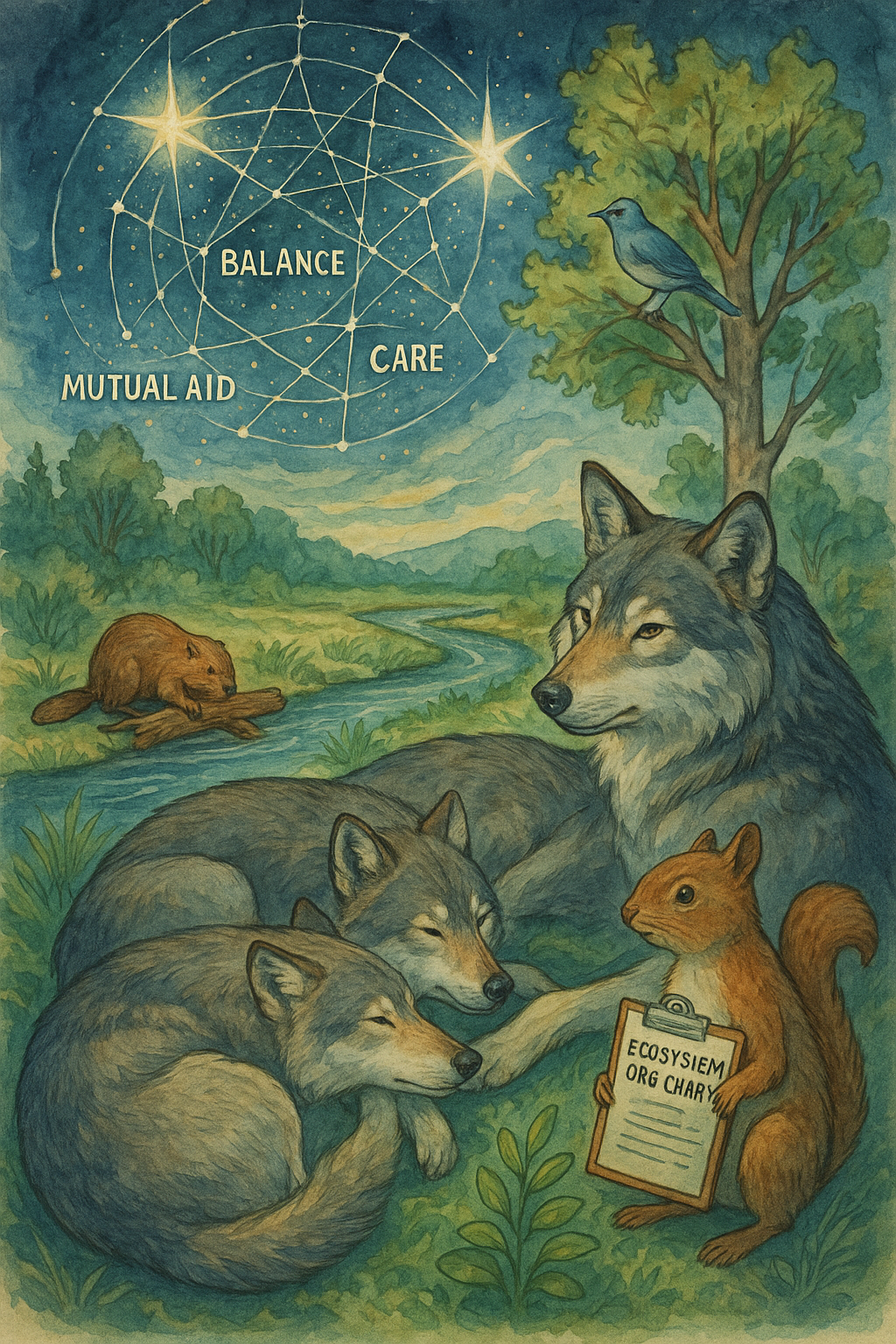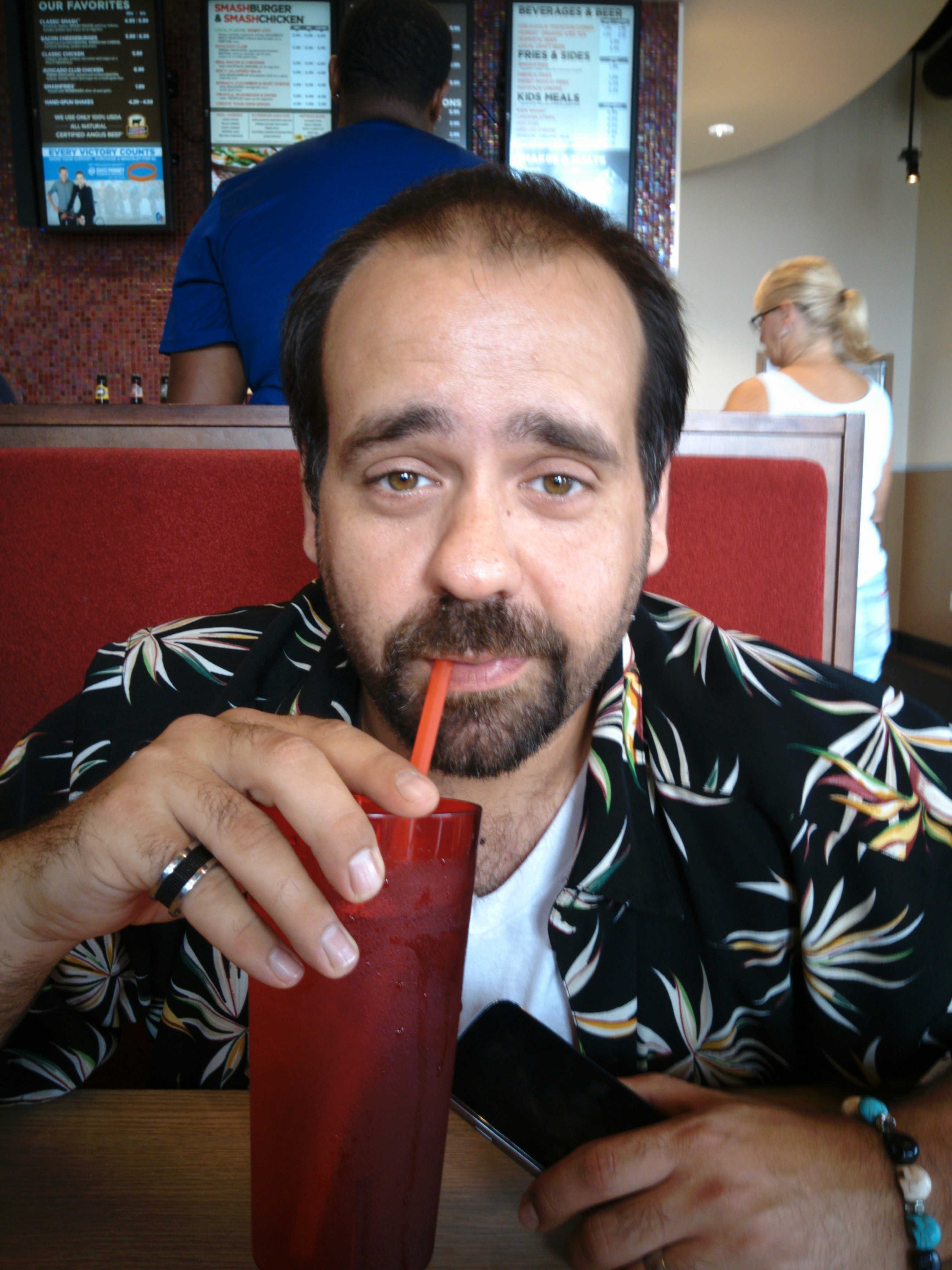🌲 The Wolf, the River, and the Web: Why Society Needs a Trophic Trickle and Not a Corporate Mauling 🌊🐺

A blog post cowritten by a band of cognitive conspirators: Zack Fosdyck, ChatGPT, and Gemini
Once upon a time—because everything true is also a story—Yellowstone lost its wolves.
And, for nearly 70 years, what followed was an ecological unraveling—a symphony without a conductor, a web with threads snapped loose and flapping wildly in the wind.
In 1995, wolves were reintroduced. What happened next? Cue the nature documentary voice: “The elk trembled. The willows sighed in relief. The rivers... got their curves back.”
It was poetic. It was viral. And—it turns out—it was oversimplified.
The famous "trophic cascade" story—that apex predators (like wolves) send ripple effects all the way down the food web, ultimately reshaping entire ecosystems—is true. Kinda. But not like Hollywood true. More like peer-reviewed-but-also-full-of-caveats true.
Let’s unravel this story—and reweave it into a tale that helps us understand something far more elusive than elk: human society.
🐺 Yellowstone Wasn’t Just About Wolves (But It Kinda Was)
Wolves returned. Elk numbers dropped. Vegetation grew back. Beavers reappeared. Riverbanks held firm. Songbirds sang. Bears snacked on carrion. And somehow, everyone on the internet said: “Look! Wolves saved the rivers!”
And yet—real life is messier. Cougar and bear populations were already rising. Human hunting outside the park was off the charts. Climate factors like drought, snowpack, and the presence (or absence) of water tables were critical. Even rogue beaver reintroductions upstream complicated the narrative.
So—was it a cascade? More like a trickle. A beautiful, multifactorial, nuanced, messy-as-heck trophic trickle.
But here’s the thing: that messiness is the message.
👥 Humans Are Not Elk. (Even if Some Twitter bios say otherwise.)
Enter Part II: The cautionary tale. A hard swerve into philosophy, social justice, and... eugenics (yeah—strap in).
You see, when people take metaphors from nature and try to slap them on society without thinking critically—bad things happen. Really bad. Think: Social Darwinism. Think: eugenics. Think: the actual justification for atrocities based on a twisted interpretation of “survival of the fittest.”
Humans aren’t elk. We don’t just wander into valleys and chew on saplings until a wolf tells us otherwise. We create ethics, compassion, culture, Spotify playlists, and memes about Wi-Fi passwords. Nature is not a moral blueprint—it’s a complex reference manual, and we’re the ones writing the instructions in the margins.
💜 From Lone Wolves to Loving Packs
So what can we learn from Yellowstone?
Let’s flip the script. Ditch the “lone wolf” mythology—rugged individualism with a side of alpha-male nonsense—and look at the pack. Wolves are cooperative. They communicate. They raise pups together. They share food and protect one another. It’s mutual aid with a growl.
Add in a dash of feminist theory (hello, ethic of care), stir in some Jungian psychology (Logos meets Eros, anyone?), and garnish with Taoist wisdom (balance is everything)—and you’ve got yourself a philosophical smoothie that actually tastes like hope.
The lesson?
We’re strongest when we’re interdependent.
We flourish when we balance structure with compassion.
And yes, sometimes the river curves again—not because of one lone action—but because of everything working in concert.
🌐 Let’s Build a Better Web
What if we built human systems the way ecosystems recover?
What if we reimagined government, education, and economics through the lens of mutual aid, feminine economics, and ecological complexity?
Not competition-as-dogma, but cooperation-as-default.
Not a GDP that ignores unpaid caregivers, but an economy that counts what really counts.
Not hierarchy, but distributed responsibility—like a wolf pack or a beaver pond.
📣 Final Howl
This post was proudly co-written with my non-human co-conspirators—ChatGPT (the wordy one) and Gemini (the idealist with a PhD in “Big Feelings and Flow Charts”). The views expressed are 80% reason, 15% radical empathy, and 5% caffeine-induced metaphor.
Let’s stop misusing nature to justify cruelty—and instead start learning from its real lessons: complexity, collaboration, regeneration, and—yes—balance.
So howl with us, will you?
Let’s rewild our minds, reroute our rivers, and remember:
We are the web.
🌀 Written with wolves, bots, and a deep desire to reimagine everything.
Thanks for reading—now go out and plant something. 🌱
